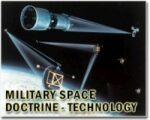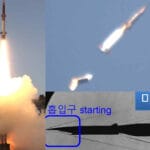In a bid to strengthen the U.S. Navy’s undersea deterrence capabilities and revitalize the maritime industrial base, Lincoln Electric Additive Solutions and General Dynamics Electric Boat (GDEB) have partnered to integrate large-scale metal additive manufacturing into submarine component production. The initiative is backed by the U.S. Department of Defense (DoD) through Defense Production Act (DPA) Title III funding, aiming to address critical bottlenecks in submarine construction—particularly for the Columbia-class ballistic missile submarines.
Strategic Context: Industrial Base Under Strain
The U.S. Navy’s shipbuilding enterprise faces mounting pressure as it attempts to deliver Columbia-class SSBNs on time while maintaining Virginia-class attack submarine production rates. The Columbia program—designated as the Navy’s top acquisition priority—is scheduled to replace aging Ohio-class boats starting in the early 2030s. However, persistent supply chain delays, skilled labor shortages, and limited capacity among Tier 2 and Tier 3 suppliers threaten program timelines.
To mitigate these risks, the DoD has increasingly turned to industrial modernization tools such as additive manufacturing (AM). In December 2023, Lincoln Electric Additive Solutions received $11 million under DPA Title III authorities to scale up its wire arc additive manufacturing (WAAM) capabilities for defense-critical applications. This funding supports collaborative efforts with GDEB to qualify AM parts for use in naval nuclear propulsion systems—a historically conservative domain due to stringent quality assurance standards.
Technology Focus: Wire Arc Additive Manufacturing at Scale
Lincoln Electric’s WAAM process leverages robotic gas metal arc welding (GMAW) technology combined with proprietary software controls and metallurgy expertise. Unlike powder-bed fusion systems typically used for aerospace components, WAAM enables high-deposition-rate fabrication of large-format steel structures—ideal for producing pressure hull inserts or cast-equivalent structural elements in submarines.
The company operates one of North America’s largest known WAAM systems at its Cleveland facility—a machine capable of printing parts up to several meters in size using multiple robotic arms working simultaneously. This scale is essential for addressing long-lead items like castings or forgings that traditionally take over a year to procure through legacy supply chains.
According to Lincoln Electric representatives cited by 3DPrint.com, the company has already delivered multiple full-scale prototypes of submarine components—including those made from HY-80 steel—to GDEB for evaluation under NAVSEA qualification protocols.
Program Integration with General Dynamics Electric Boat
General Dynamics Electric Boat is the prime contractor for both Columbia- and Virginia-class submarines and plays a central role in integrating AM parts into naval platforms. The company has been exploring additive technologies since at least 2016 but has accelerated efforts amid increasing demand signals from the Navy and DoD leadership.
The current collaboration focuses on qualifying AM-produced structural components that meet NAVSEA SUBSAFE requirements—a rigorous set of standards governing safety-critical systems aboard nuclear submarines. Achieving this milestone would allow AM parts not only in non-critical areas but also within pressure hulls or propulsion support structures where traditional castings are often used.
This effort complements other DoD-backed initiatives such as Austal USA’s aluminum AM integration into expeditionary fast transport vessels or Huntington Ingalls Industries’ use of directed energy deposition (DED) technologies at Newport News Shipbuilding.
DPA Funding Mechanism and Strategic Impact
The Defense Production Act Title III program provides direct investment into domestic industrial capabilities deemed essential for national defense. In recent years it has funded projects ranging from microelectronics packaging to rare earth magnet production—and increasingly additive manufacturing across aerospace and naval sectors.
- $11M awarded: To Lincoln Electric Additive Solutions in Dec 2023 under DPA Title III
- Objective: Expand metal AM capacity for critical submarine components
- Partners: General Dynamics Electric Boat; oversight by Office of Industrial Base Policy (OIBP)
This funding supports not just capital equipment upgrades but also workforce training programs aimed at scaling skilled labor pipelines within additive manufacturing disciplines—an area where talent shortages persist across defense OEMs and suppliers alike.
Operational Implications for Submarine Programs
If successful, this initiative could significantly reduce lead times for complex metallic parts traditionally sourced via casting or forging routes—many of which face multi-year backlogs due to foundry closures or limited domestic capacity. For example:
- Casting lead times: Often exceed 52 weeks for large HY-80/HY-100 steel components
- Additive alternative: Potentially reduces fabrication cycle by over 70%, depending on part complexity
This acceleration is particularly relevant as GDEB ramps up toward full-rate production of Columbia-class hull modules while simultaneously supporting AUKUS-related expansion plans involving Australia’s future SSN-AUKUS fleet based on Virginia-class designs.
Additive Manufacturing’s Role in Future Naval Sustainment
Beyond new construction programs, large-format metal AM offers potential benefits in sustainment operations—especially when forward-deployed forces require rapid part replacement without waiting months for traditional spares. The Navy has already tested containerized AM units aboard surface ships; extending similar capabilities into submarine tender platforms could enhance readiness across distributed maritime operations concepts.
The current Lincoln-GDEB collaboration thus represents more than just a technical pilot—it signals a broader doctrinal shift toward integrating digital manufacturing into core naval logistics frameworks over the coming decade.
Conclusion: Toward an Agile Maritime Industrial Base
The partnership between Lincoln Electric Additive Solutions and General Dynamics Electric Boat underscores how advanced manufacturing technologies are reshaping defense production paradigms amid growing geopolitical pressures. By leveraging WAAM at scale under DPA-backed initiatives, stakeholders aim not only to accelerate delivery schedules but also ensure long-term resilience within America’s maritime industrial base—a cornerstone capability underpinning strategic deterrence well into the mid-century era.









